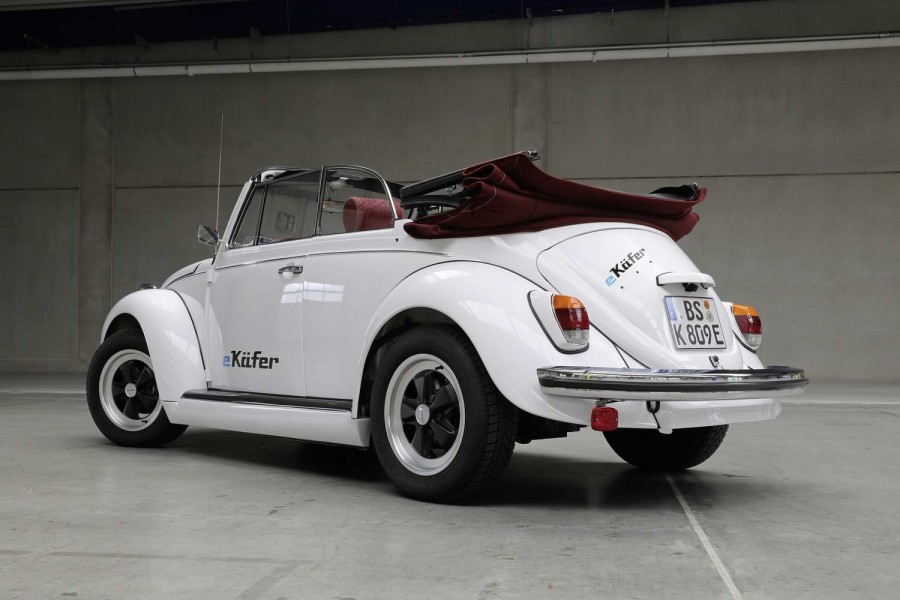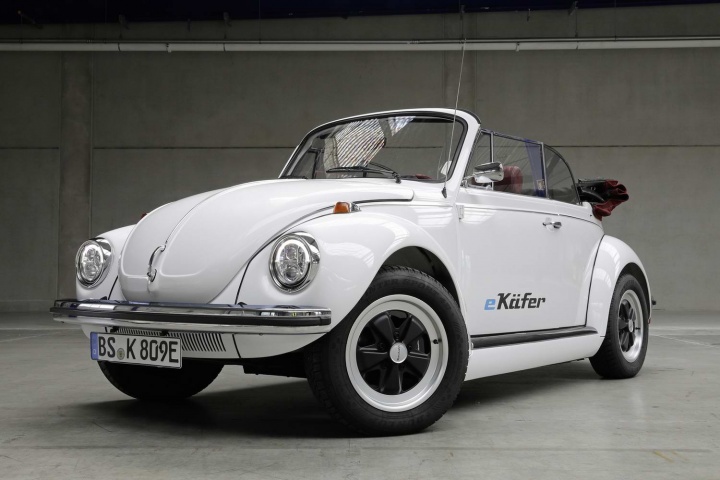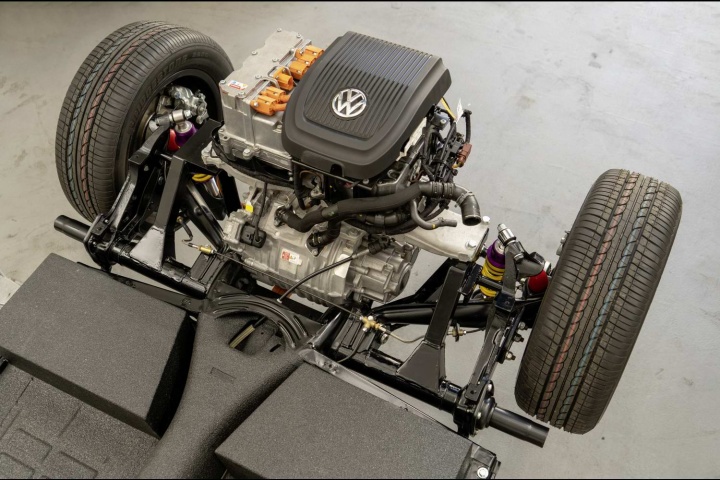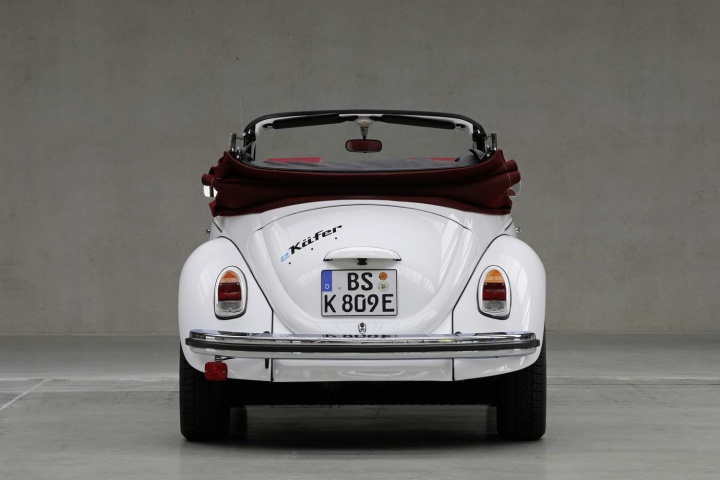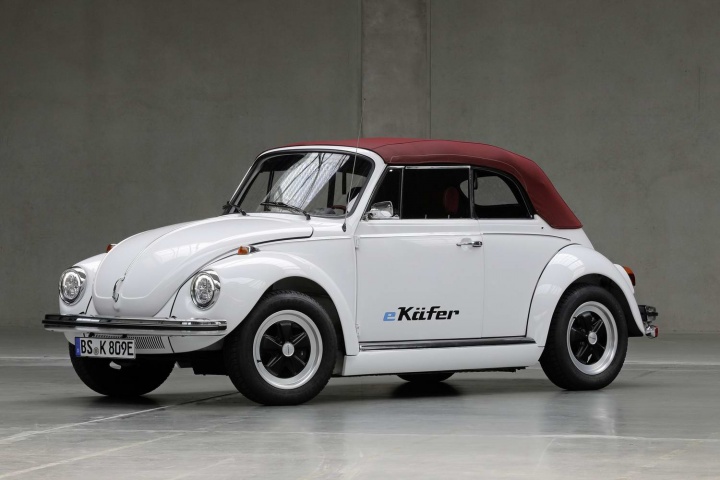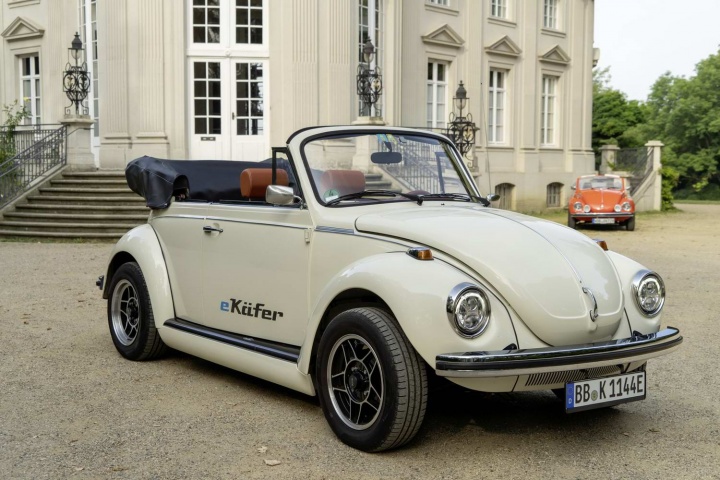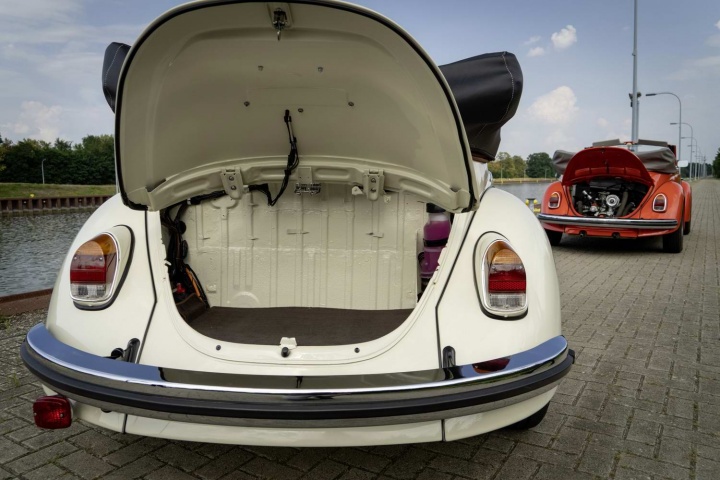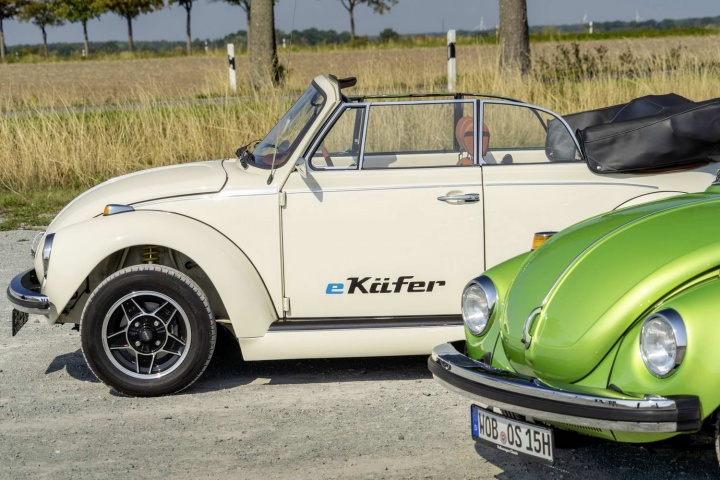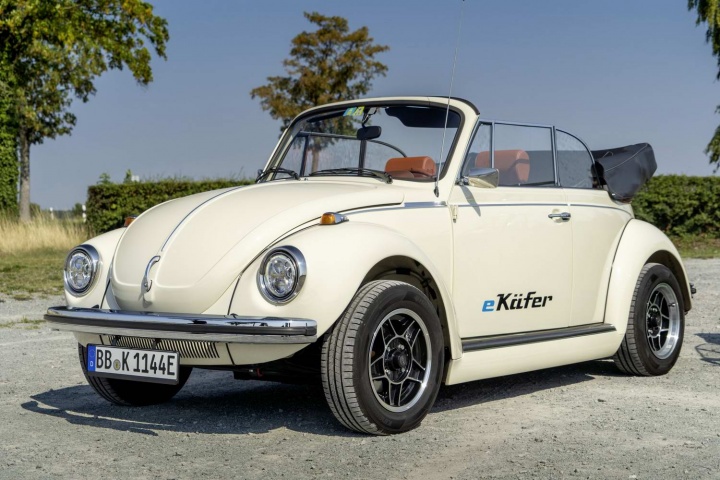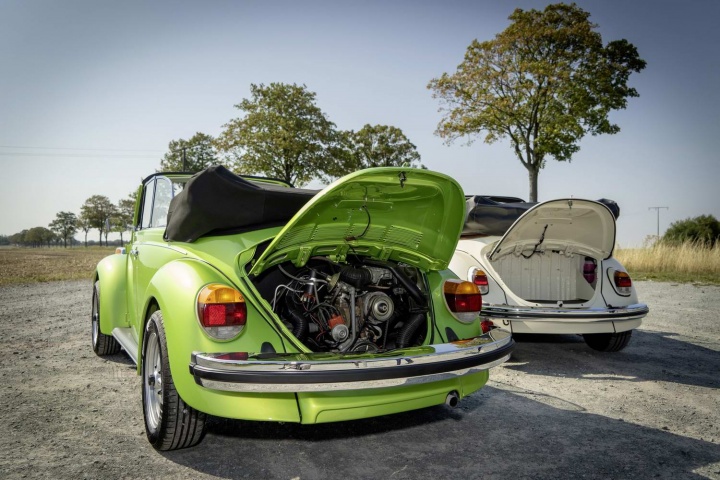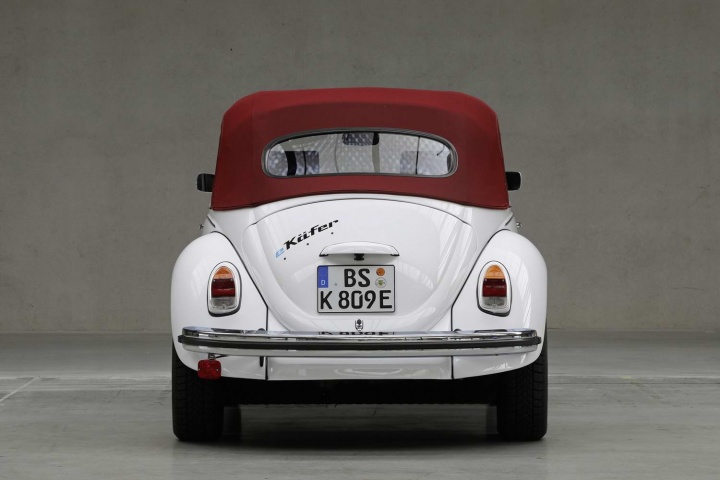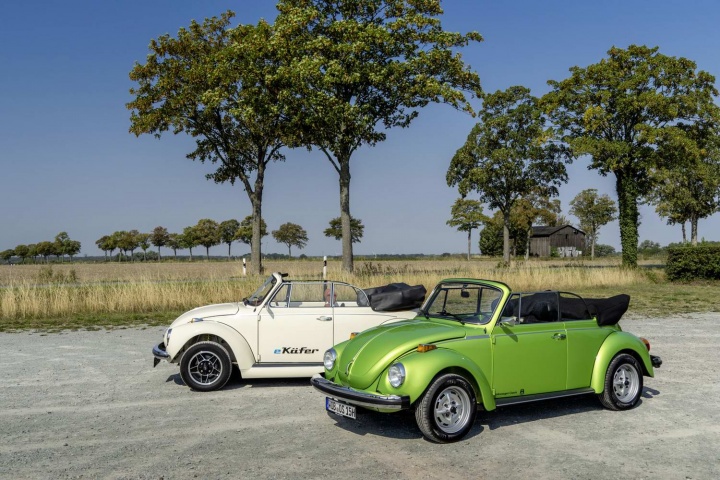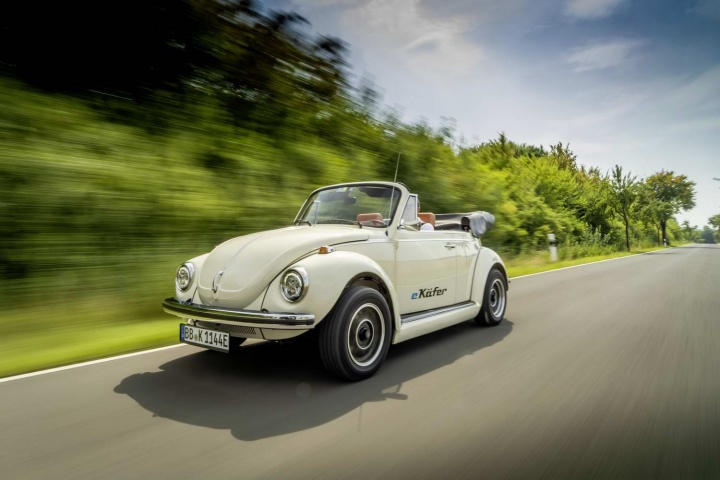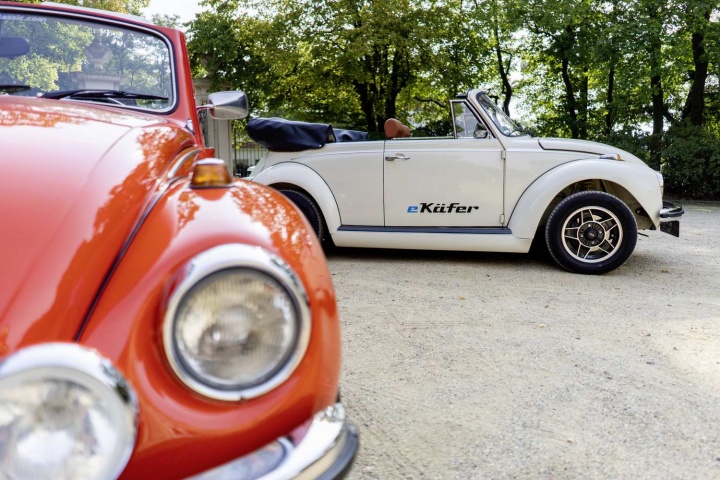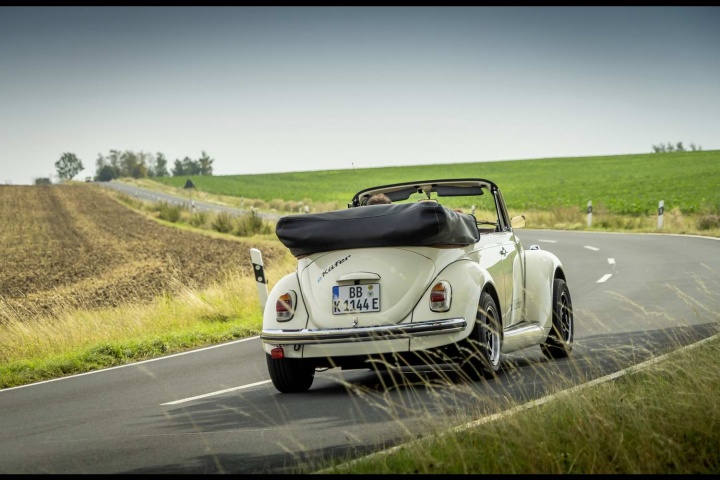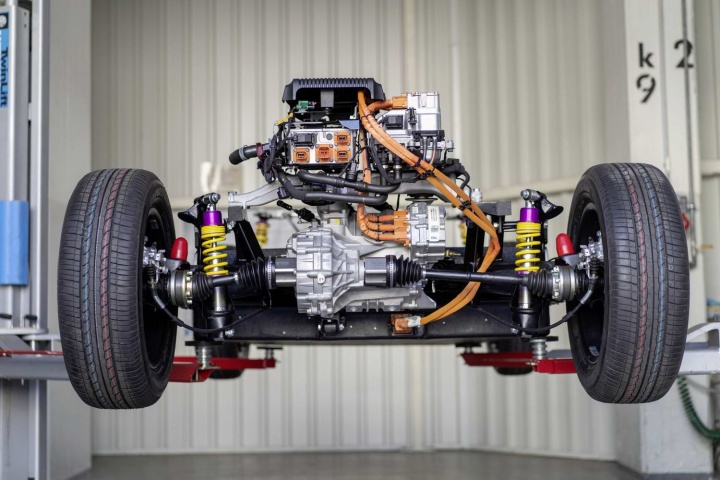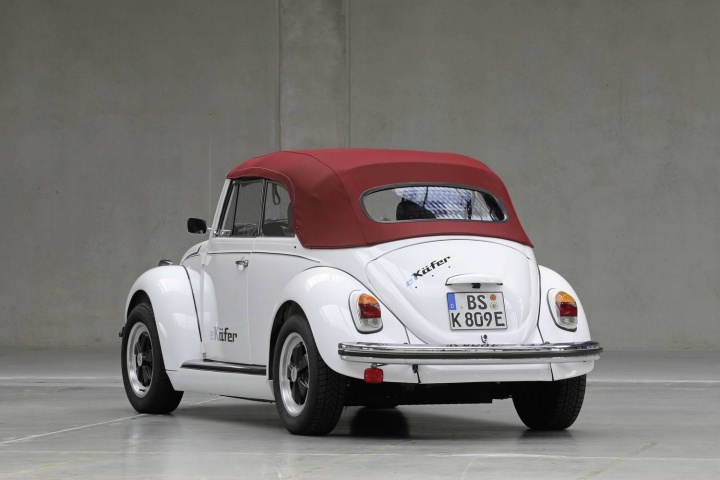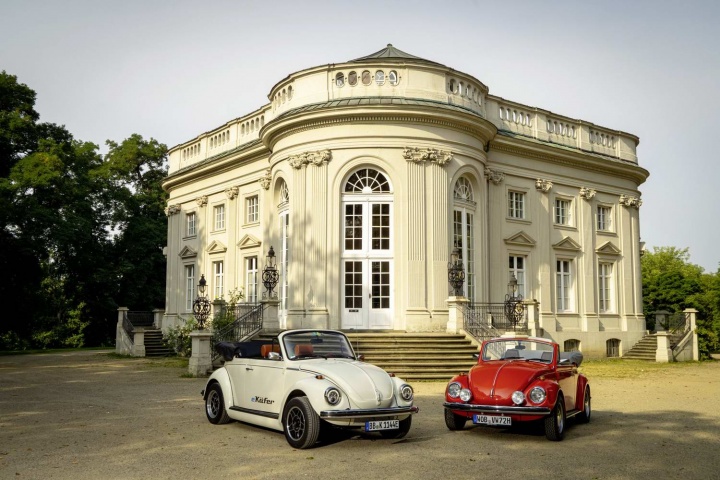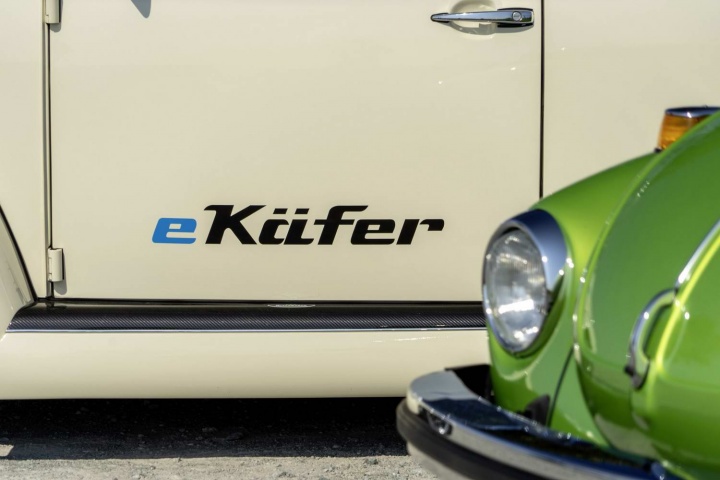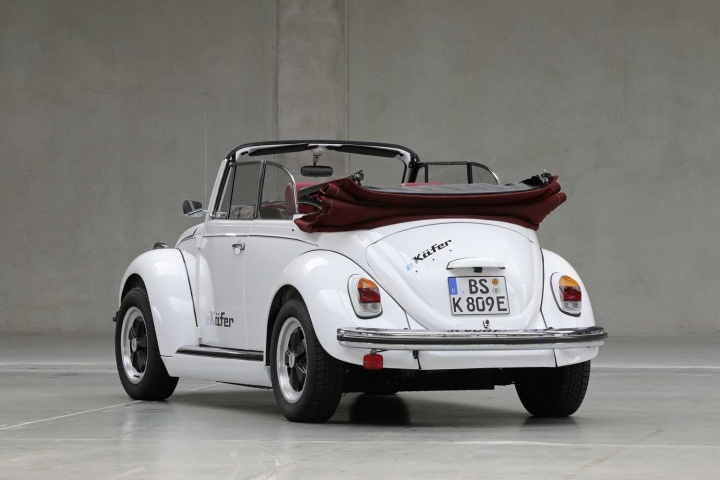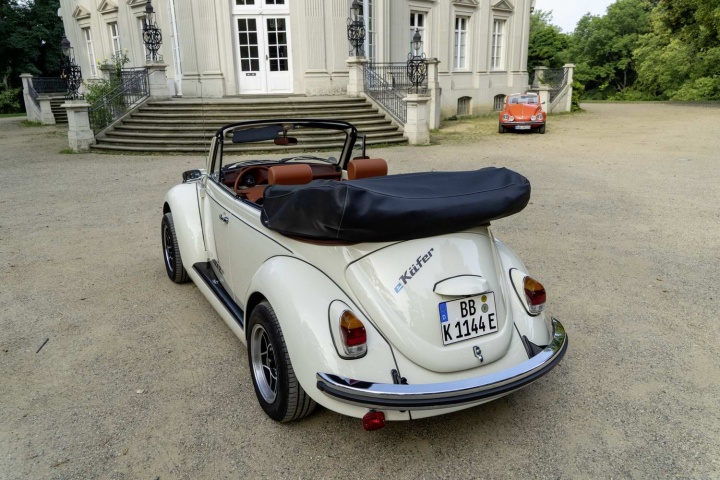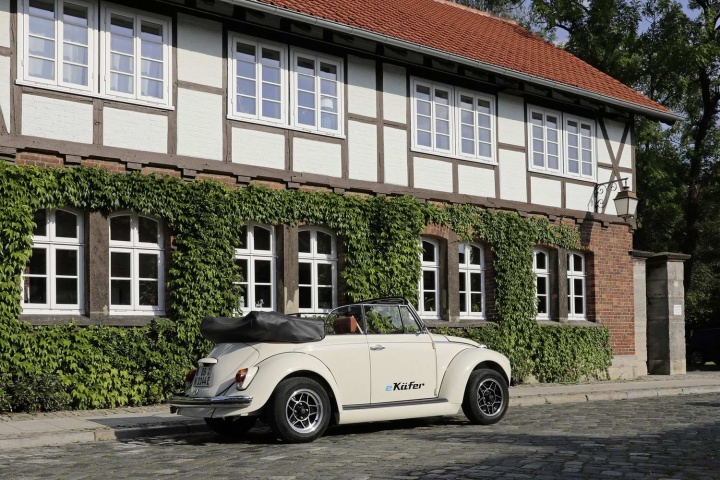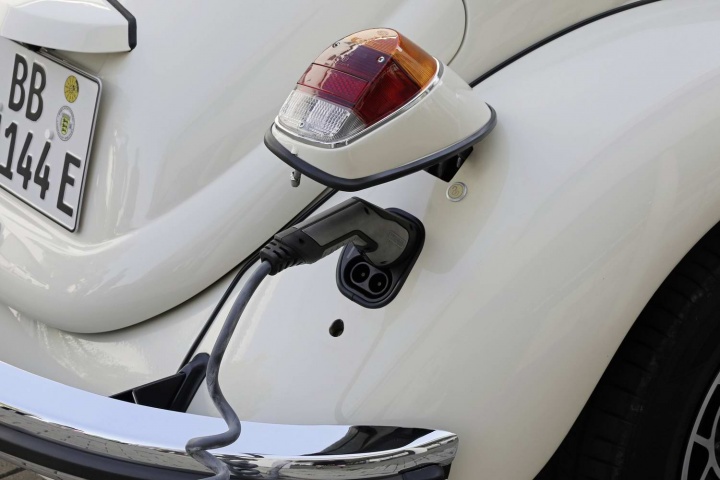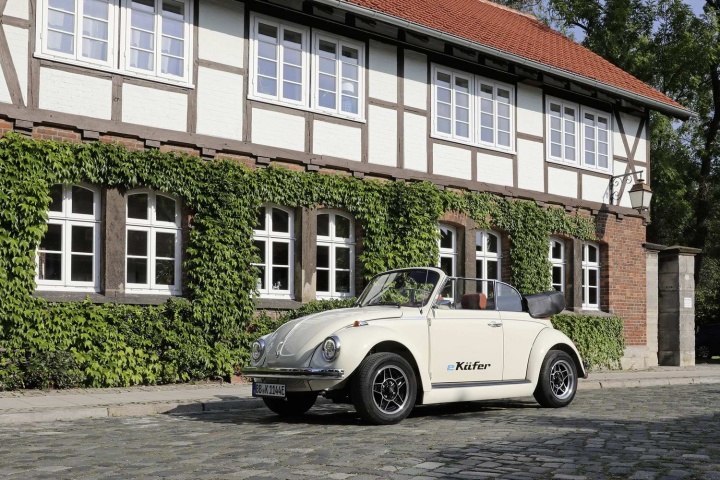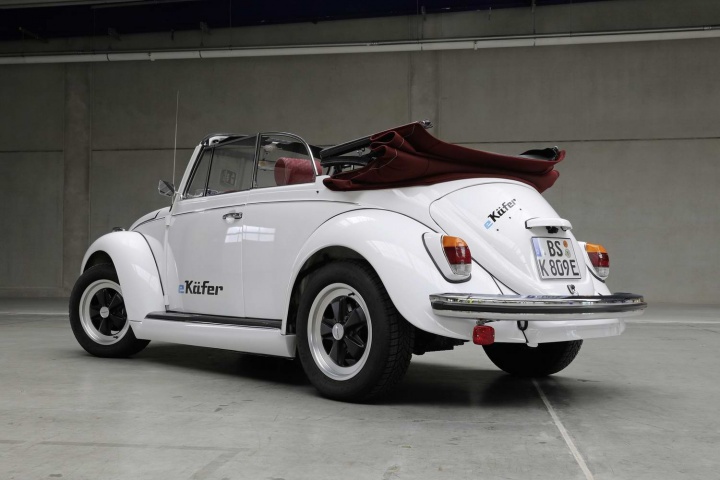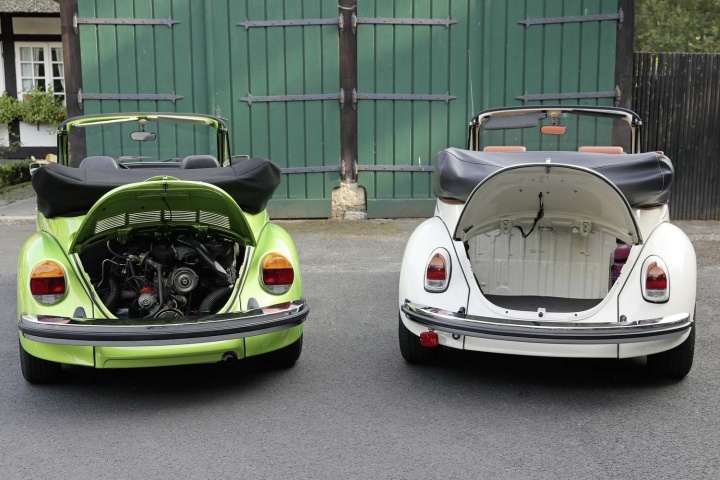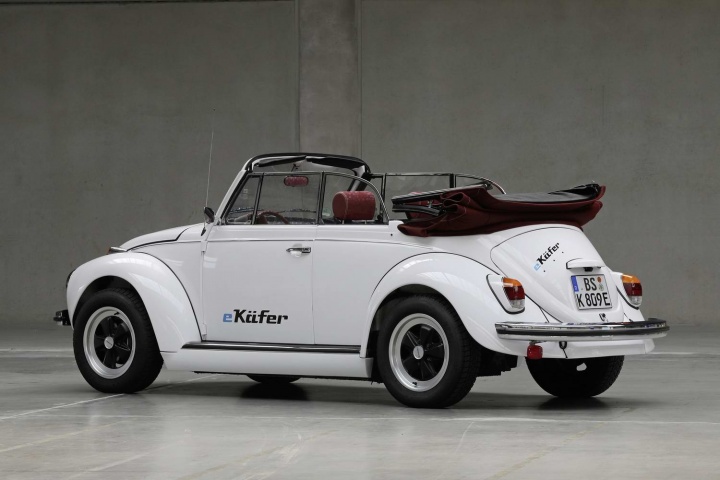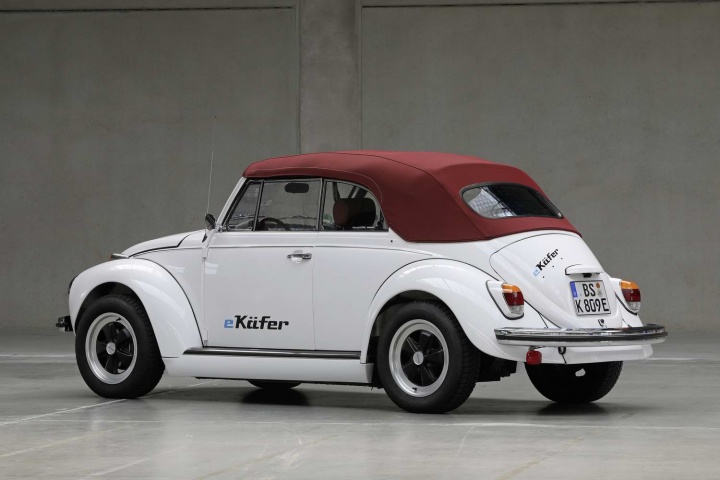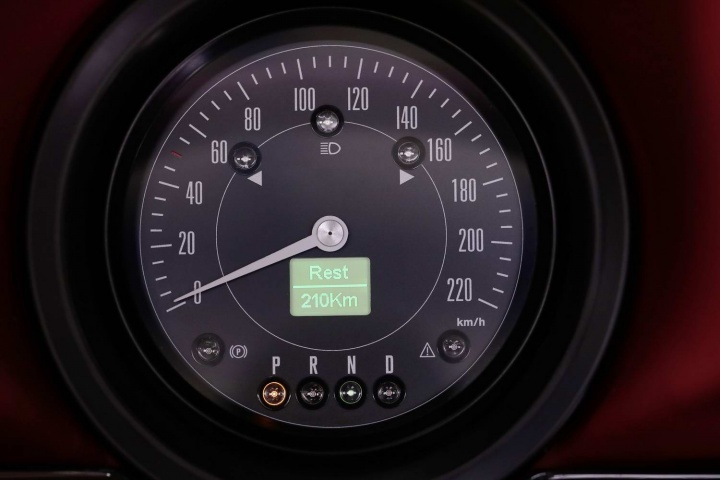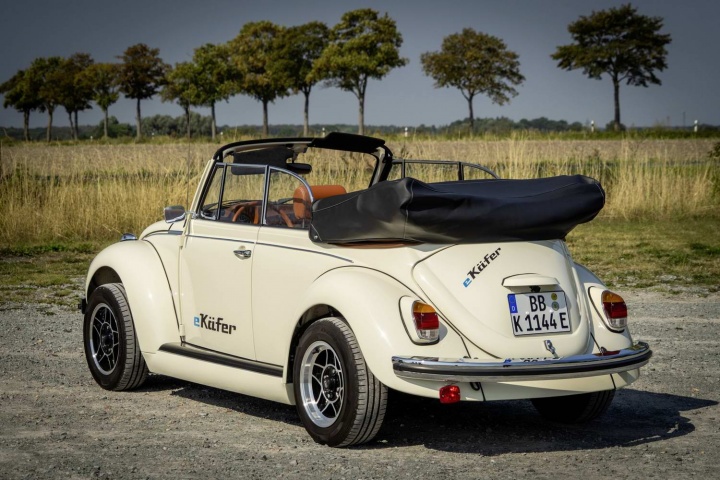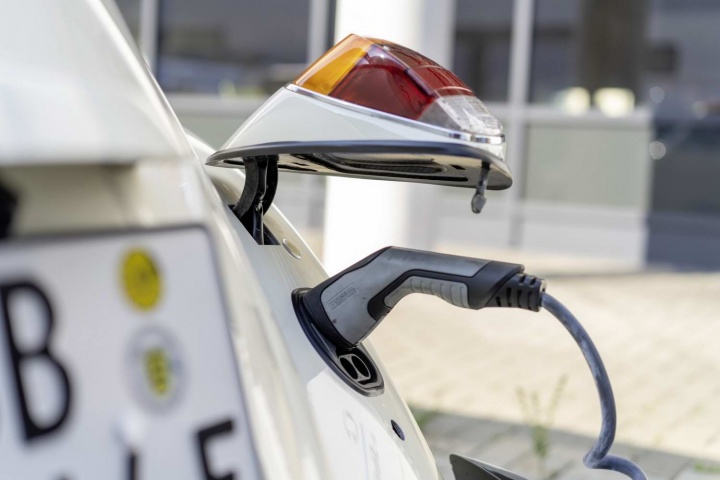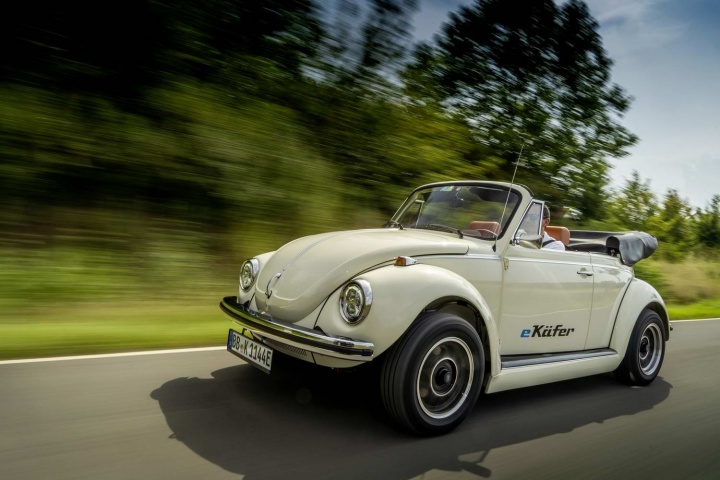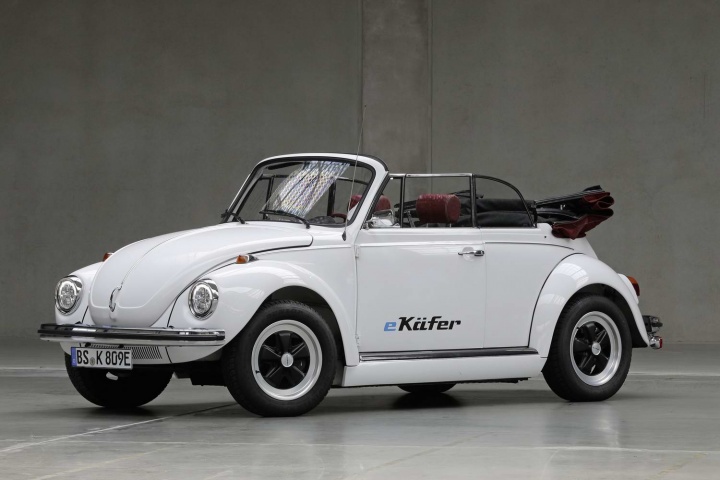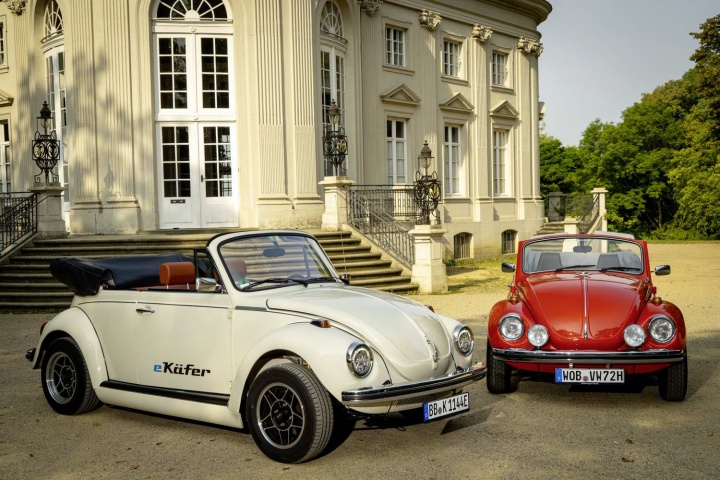There’s a growing trend in the motoring industry for the electrification of classic cars - the Issigonis Mini, or the Ferrari 308 GTSi being good examples. So now Volkswagen has got in on the act, promising a new lease of life for arguably the most famous classic car in motoring history - the Beetle.
200km of EV classic range
This is a tie-up between Volkswagen Group Components (VGC) and its partner firm eClassics. It exclusively uses new parts that have been mutually agreed upon from the VGC series production, so the electric drive, single-speed gearbox and the battery system all come from the e-up!. eClassics then does the work at installing all this gubbins into the Beetle’s shell.
In total, the e-Beetle - which follows the naming convention Volkswagen bestows on its EVs, such as the e-Golf - gets 60kW (82hp) and has 14 2.6kWh lithium-ion battery modules, leading to a total capacity of 36.8kWh. As a result of this, the e-Beetle does 0-50km/h in less than four seconds and 0-80km/h in a smidge beyond eight seconds, which makes it quicker than the combustion versions of yore; that means the higher performance and increased weight of the e-Beetle requires the chassis and brakes to both be adapted and reinforced.
Electric Microbus to come...?
VGC and eClassics claim that the e-Beetle will go 200km on a single charge, with top speeds of up to 150km/h. It also has a fast-charging system connection built into it, meaning it can take on more than 150km of range in around an hour. And in case you’re wondering, yes - this technology could be transferred to other classics from the Volkswagen Group, as Thomas Schmall, member of the board of management for VGC, said: “The electrified Beetle combines the charm of our classic car with the mobility of the future. Innovative e- components from Volkswagen Group Components are under the bonnet - we work with them to electrify historically important vehicles, in what is an emotional process. We are also providing Beetle owners with a professional conversion solution, using production parts of the highest quality. We are already working together to prepare the platform for the Bus. An e-Porsche 356 could also be pursued in the future.”
eClassics is based in Renningen, near Stuttgart, and managing directors Dennis Murschel and Martin Acevedo said in a joint statement: “We are proud that we and Volkswagen Group Components could get the show on the road with this project. We are also looking forward to seeing many e-Beetles on the street soon.” We should just point out - at this stage, the e-Beetle is not yet available for sale...

